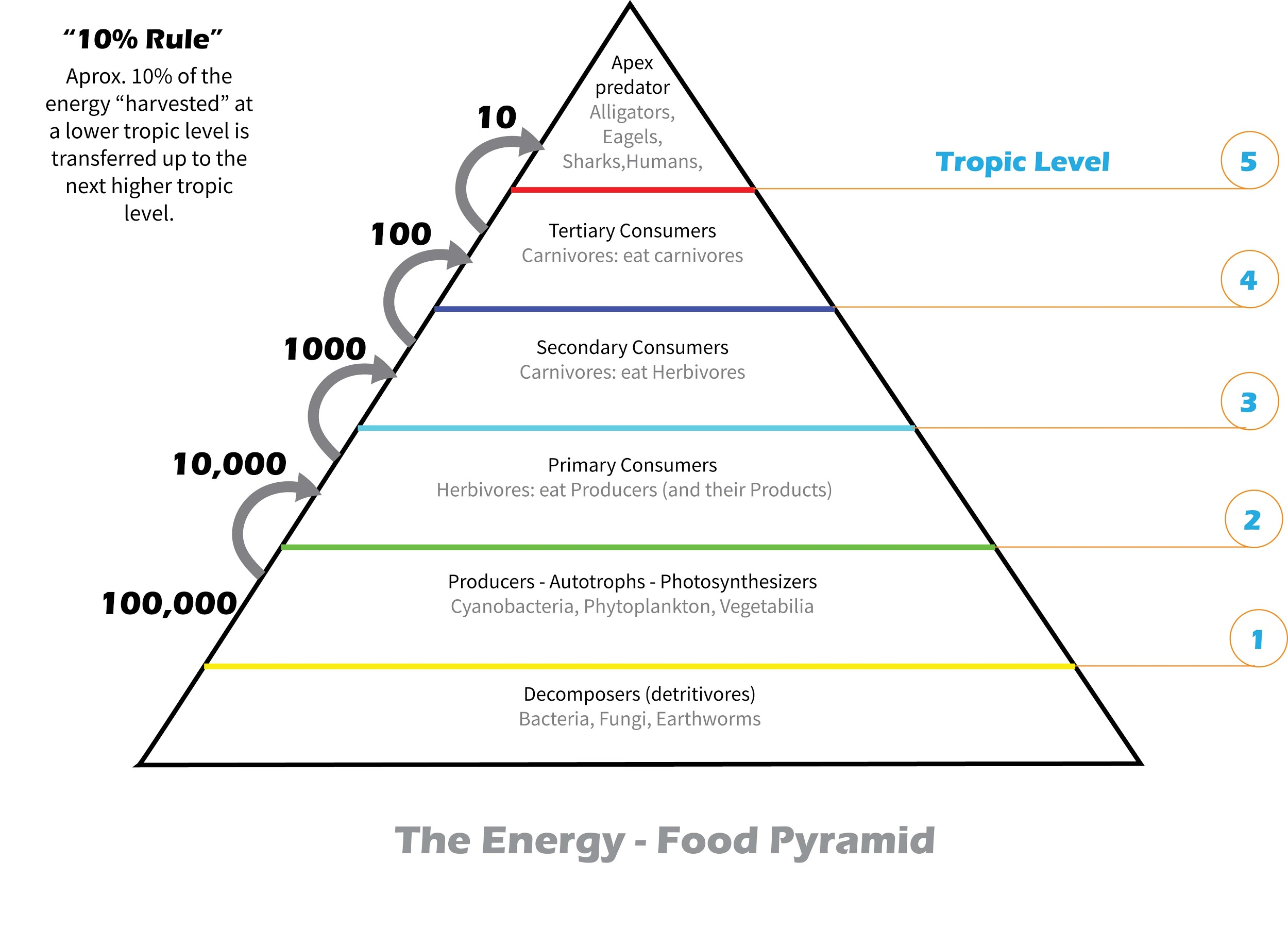
Explain the energy pyramid.
Answer
552.6k+ views
Hint: An energy pyramid is used to visualize how energy moves through levels of an ecosystem and how much of that energy is available at each level. It is a type of ecological pyramid. It is also known as the trophic pyramid.
Complete answer:
- An energy pyramid is a graphical representation of the flow of energy through the organic matter in an ecosystem.

- The energy trapped per unit time and area in different levels of the food chain is expressed in it.
- In the Pyramid of energy the energy flow is unidirectional and thus it is always upright.
- Energy pyramids follow the 10% Rule.
- According to this rule when energy moves between trophic levels,10% of the energy is made available for the next level. The 90% is referred to as Metabolic loss.
- The trophic level that represents producers has the highest amount of energy.
- It follows that the carnivores (secondary consumers) that feed on herbivores and detritivores and those that eat other carnivores (tertiary consumers)have the lowest amount of energy available to them.
- Main disadvantage of the pyramid of energy is that it does not indicate the rate of biomass production. In some cases, it is difficult to assign organisms to a particular trophic level.
- Energy pyramids were proposed by Charles Elton.
- Using ecological pyramids, it is very easy to study the interaction between organisms.
Note:
There are 3 types of ecological pyramids
1. Pyramid of Number
2. Pyramid of Biomass
3. Pyramid of Energy
Pyramid of biomass is inverted in a pond ecosystem. The pyramid of numbers is inverted in the case of the parasitic food chain. It can be spindle- shaped also.
Complete answer:
- An energy pyramid is a graphical representation of the flow of energy through the organic matter in an ecosystem.

- The energy trapped per unit time and area in different levels of the food chain is expressed in it.
- In the Pyramid of energy the energy flow is unidirectional and thus it is always upright.
- Energy pyramids follow the 10% Rule.
- According to this rule when energy moves between trophic levels,10% of the energy is made available for the next level. The 90% is referred to as Metabolic loss.
- The trophic level that represents producers has the highest amount of energy.
- It follows that the carnivores (secondary consumers) that feed on herbivores and detritivores and those that eat other carnivores (tertiary consumers)have the lowest amount of energy available to them.
- Main disadvantage of the pyramid of energy is that it does not indicate the rate of biomass production. In some cases, it is difficult to assign organisms to a particular trophic level.
- Energy pyramids were proposed by Charles Elton.
- Using ecological pyramids, it is very easy to study the interaction between organisms.
Note:
There are 3 types of ecological pyramids
1. Pyramid of Number
2. Pyramid of Biomass
3. Pyramid of Energy
Pyramid of biomass is inverted in a pond ecosystem. The pyramid of numbers is inverted in the case of the parasitic food chain. It can be spindle- shaped also.
Recently Updated Pages
Master Class 12 Business Studies: Engaging Questions & Answers for Success

Master Class 12 Economics: Engaging Questions & Answers for Success

Master Class 12 English: Engaging Questions & Answers for Success

Master Class 12 Maths: Engaging Questions & Answers for Success

Master Class 12 Social Science: Engaging Questions & Answers for Success

Master Class 12 Chemistry: Engaging Questions & Answers for Success

Trending doubts
What are the major means of transport Explain each class 12 social science CBSE

Which are the Top 10 Largest Countries of the World?

Draw a labelled sketch of the human eye class 12 physics CBSE

Explain sex determination in humans with line diag class 12 biology CBSE

The pH of the pancreatic juice is A 64 B 86 C 120 D class 12 biology CBSE

Give 10 examples of unisexual and bisexual flowers




